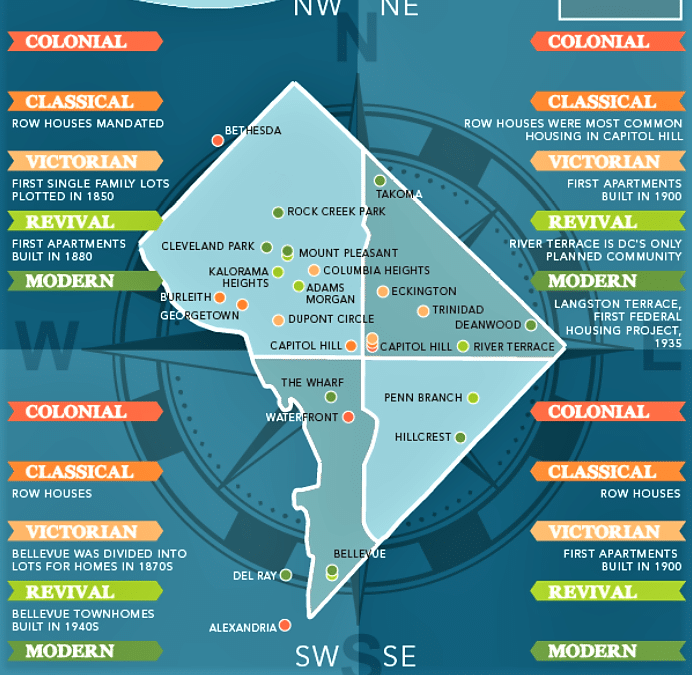From its rise from the ashes after the War of 1812 to its renaissance of African American culture, Washington DC has a unique history all its own, often encapsulated by its many museums and monuments. With so much emphasis placed on the public and commercial areas of the District, it can be easy to miss the architectural history of the residential neighborhoods around DC. The infographic below walks you through each style of building from the founding of the city through modern times and where you can see examples of each by neighborhood.
Scroll below the infographic to find out what each symbol is and how to use this so you can identify each style while you pass by.

Please use the HTML code below to embed this graphic:
<a href=”https://www.washingtoncapitalpartners.com/hard-money-lending/history-architecture-washington-dc”> <img title=”How hard money loans work” src=”https://www.washingtoncapitalpartners.com/wp-content/uploads/2019/02/guide-to-architecture-of-washington-dc.jpg” alt=”washington dc architecture” width=”600″ height=”1393″ /></img></a>
Key
- Each era is color coded.
- The dates show when this style was popular for construction.
- The neighborhoods indicate where many of these homes still exist.
Now that you know how to detect what is on the map, here are some fun facts about things you can still see as you tour the city by quadrant.
NE
- Row houses were the most common housing in Capitol Hill
- A large group of Stick row homes can be seen at 500 block Constitution Ave NE
- Kit houses purchased from Sears were very popular in the far north neighborhoods, many still stand in Takoma.
- A kit house was a home purchased in pieces from a catalog to be constructed by the homeowner on site.
NW
- Georgetown houses prior to 1791 are mostly gone and none exist in the city’s core
- Federal style started in Capitol Hill and flowed towards Georgetown as new row houses were constructed.
- The first plots for single-family homes were laid north of Florida Ave. in 1850 – before that homes were either estates on large lots or row houses.
- The first apartments in Washington DC were the French Flats in 1880, at 1418 I Street.
SE
- Apartment buildings went from NW to SE quadrants with the first apartment buildings built in 1900 in SE quadrant.
- Known for family style homes outside of “city living”.
SW
- This quadrant was mostly the Navy Shipyard and didn’t contain much residential housing until WW II when townhouses we built in Bellevue to house military families working at Bolling Air Force Base.
- 1985 Danbury Station was built out as part of Bellebue
- Currently under full redevelopment with releases in phases, now called The Wharf.

